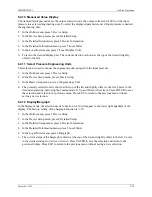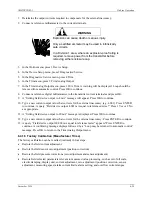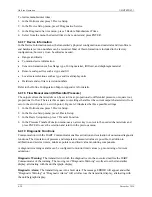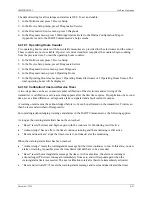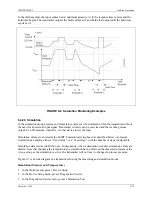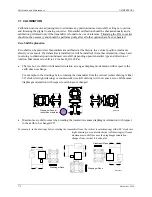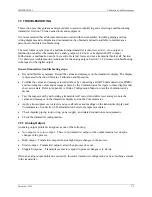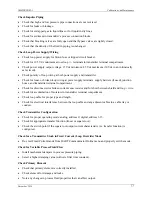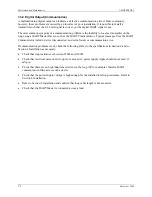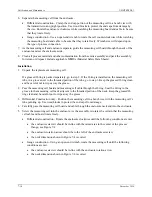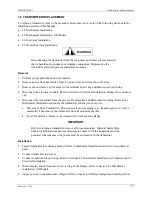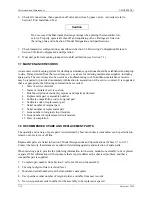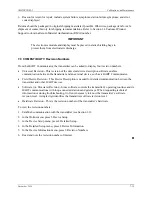
UMSITRPDS3-1
Calibration And Maintenance
November 2010
7-5
7.3 TROUBLESHOOTING
This section provides guidance and procedures to assist in identifying and correcting a malfunctioning
transmitter. Section 7.0 lists needed tools and equipment.
It is recommended that all documentation associated with the transmitter, including piping and loop
wiring diagrams and configuration documentation, be obtained and made available to maintenance
personnel to facilitate troubleshooting.
The most common symptom of a malfunctioning transmitter is incorrect, erratic, or no output. A
malfunction can affect the transmitter’s analog output (4-20 mA) or its digital (HART) output.
Furthermore, a malfunction can be the result of external forces and not a transmitter fault at all. Section
7.3.1 discusses troubleshooting techniques for the analog output. Section 7.3.2 discusses troubleshooting
techniques for the digital output.
General transmitter troubleshooting steps:
•
Record all failure symptoms. Record the values and messages on the transmitter display. The display
is discussed in Section 6 On-Line Calibration and Operation.
•
Confirm the values and messages recorded above by connecting a HART Communicator (or DMM)
and recording the values and messages shown by the Communicator. Navigate to those displays that
show active data. Refer to Appendix A Online Configuration Maps to roam the Communicator’s
menus.
•
Test the suspect unit by performing a transmitter self test or transmitter reset and again note the
values and messages on the transmitter display and on the Communicator.
•
Apply a known pressure (or level) and note all values and readings on the transmitter display and
Communicator. See Section 5 Post Installation Tests for sample procedures.
•
Check impulse piping, loop wiring, power supply, and related connections and equipment.
•
Check the transmitter configuration.
7.3.1 Analog Output
An analog output problem can appear as one of the following:
•
No output or very low output – There is no transmitter output or the output remains low despite
changes in the process.
•
High output – Transmitter output remains high despite changes in the process.
•
Erratic output – Transmitter output varies when process does not.
•
Sluggish response – Transmitter seems to respond to process changes very slowly.
Often an analog output problem is caused by incorrect transmitter configuration or by something external
to the transmitter.
Summary of Contents for 7MF4033 series
Page 48: ...Model 275 Universal Hart Communicator UMSITRPDS3 1 November 2010 2 26 ...
Page 86: ...Installation UMSITRPDS3 1 November 2010 4 34 ...
Page 152: ...Calibration and Maintenance UMSITRPSD3 1 November 2010 7 20 ...
Page 158: ...Circuit Description UMSITRPDS3 1 November 2010 8 6 ...
Page 197: ......
Page 198: ......
Page 200: ...Model Designations and Specifications UMSITRPDS3 1 November 2010 9 42 ...
Page 204: ...Glossary UMSITRPDS3 1 November 2010 10 4 ...
Page 208: ...Appendix A Online Configuration Map UMSITRPDS3 1 11 4 November 2010 ...
Page 216: ...Appendix C Elevation and Suppression Correction UMSITRPDS3 1 13 4 November 2010 ...

